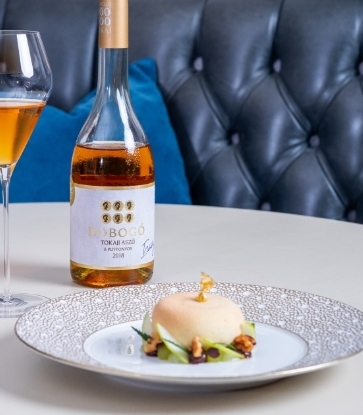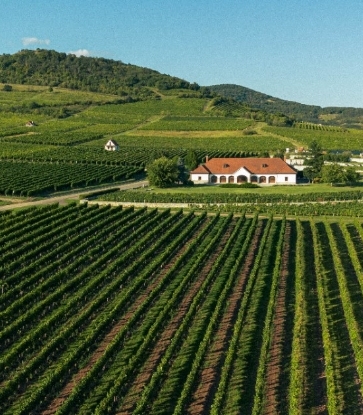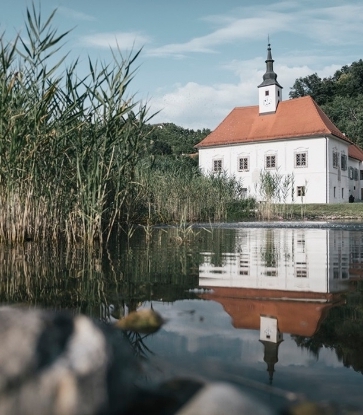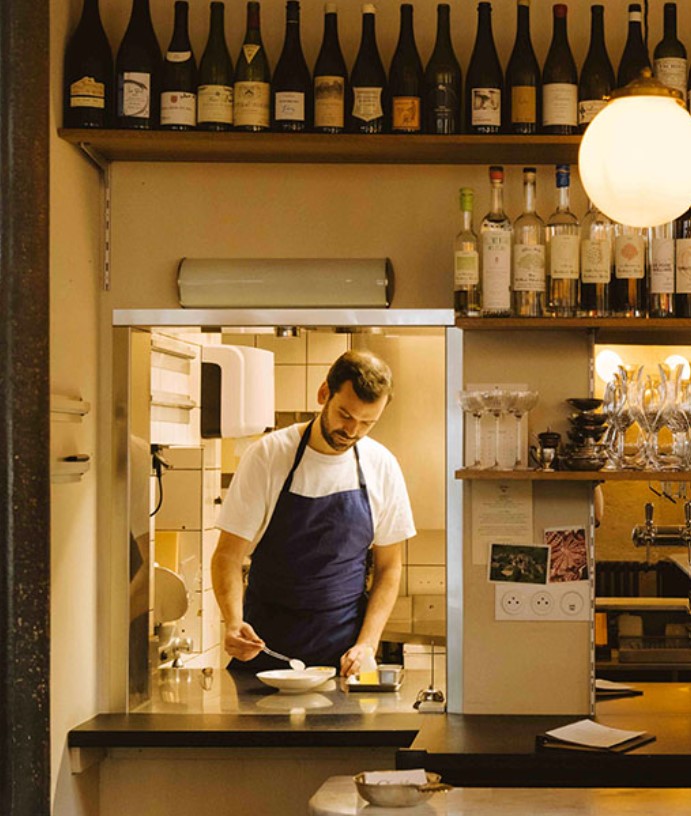No mention of Mendoza can be made without talking about Argentinian wine. This province is moulded by the imprint of its vineyards, with its roads and tracks framed by vines teeming with grapes in summer, ochre colours in autumn, and vine stocks denuded of foliage during the harsh winter months. Located alongside the imposing Andes mountains, Mendoza produces over 70% of the country’s wine in 900 or so bodegas spread across the province, from San Rafael to the Uco Valley, as well as in Luján de Cuyo and Maipú to the east of Mendoza. And when we talk about wines from the province, the strong emphasis is on quality and variety, and not just quantity.
“Mendoza is home to numerous wine-producing areas with different soils and altitudes that provide the perfect conditions for styles and qualities that go far beyond the stereotypical ‘Mendoza Malbec’”, explains Luis Gutiérrez, a renowned critic and wine-testing expert for Robert Parker.
Like never before, Mendoza’s wines encompass both tradition and modernity, in so doing offering options for all tastes: you’ll find bold, dark Malbecs that spend many months ageing in French barrels; fresh and expressive Malbecs that are fermented and kept in concrete “eggs”; classic French varietals such as Merlot, Pinot Noir, Cabernet Sauvignon and Syrah; as well as varieties from many other wine-producing regions, including Gewürztraminer, Riesling, Albariño, Garnacha and Monastrell, among others.

Sustainability is an important characteristic in local wine production, helped by perfect conditions for the health of its vines – the result of the desert-like climate here and the strong winds that blow from the nearby mountains. As a result, the number of winemakers producing natural wines is on the increase thanks to the constant growth in the surface area of organic and biodynamic vineyards in the province.
With his deep knowledge of Argentina, where he has developed a particular expertise, Gutiérrez states that one of the most fascinating aspects about Mendoza is that it is home to “estates that produce a large quantity of wine, such as Catena and Zuccardi; yet it also has space for smaller winemakers such as Per Se (run by Edgardo del Popolo and David Bonomi), the many projects developed by the Michelini brothers, and the wines produced by Matías Riccitelli”. And while he admits that it is impossible to ignore the fact that Malbec is the most widespread grape variety here, he also personally recommends Cabernet Franc. “It’s not always necessary to think in terms of single-varietal wines; for example, the blend of Malbec with Cabernet Franc is incredible, and almost unique in Mendoza. And in terms of white grapes, Semillon — which was the major varietal in the past — has tremendous potential”, Luis concludes.
The Perfect Pairing of Food and Wine
There’s no doubt that the recent growth in Mendoza’s food scene is indelibly linked to wine: to illustrate the fact, almost all restaurants recommended by the MICHELIN Guide in the province are located on wine estates, providing visitors with the opportunity to dine amid idyllic landscapes and enjoy gourmet cuisine paired with top wines.The Past and Present in Trapiche
Your journey could easily start in Coquimbito (district of Maipú), just 25 minutes from the centre of the city of Mendoza, where you’ll find the Espacio Trapiche, the restaurant belonging to the renowned Trapiche bodega. Here, you can breathe in some of the history of Argentinian wine, as the cellars occupy a historic building dating back to 1912, located alongside the railway tracks that once transported barrels of wine to the city of Buenos Aires. The restaurant’s contemporary lines are in sharp contrast with the adobe and brick buildings visible through its large picture windows. The cuisine on offer, created in tandem by chef Lucas Bustos and wine expert Sergio Casé, is a fusion of fire and kitchen-garden produce. Here, you can choose between 5- and 9-course tasting menus as well as dishes from the à la carte. You’ll find more classic recipes such as the loin of veal paired with a Gran Medalla Malbec, and less conventional options such as the squid with vegetables served with the Costa y Pampa Chardonnay. We also recommend asking for wines that don’t feature on the wine list, as Sergio Casé and his team often experiment with non-traditional varieties and techniques that you can only find in the bodega’s restaurant.
Time-honoured cuisine at 5 Suelos
5 Suelos - Cocina de Finca, the restaurant at the Durigutti bodega, is another that focuses on the past, present and future of Argentinian wine, with a menu designed by chef Patricia Courtois and head sommelier, Martín Krawczyk. In a glass-fronted dining room in the middle of the vineyards in Las Compuertas, the Historia menu narrates the evolution of wine, starting way back in the past and relating its development in the Americas over the past 500 years. The 14 courses start with a glass of the Inframundo Natural Blend (a wine that is made in terracotta amphorae without added sulphites and which showcases the way in which wine was fermented in times gone by) to accompany a beef loin tartare served on a Malbec vine leaf. This is followed, for example, by a fritter of marinated vegetables and olives paired with a glass of Proyecto Las Compuertas Criolla Chica, in tribute to the first grapes that arrived on the American continent during the Spanish conquest.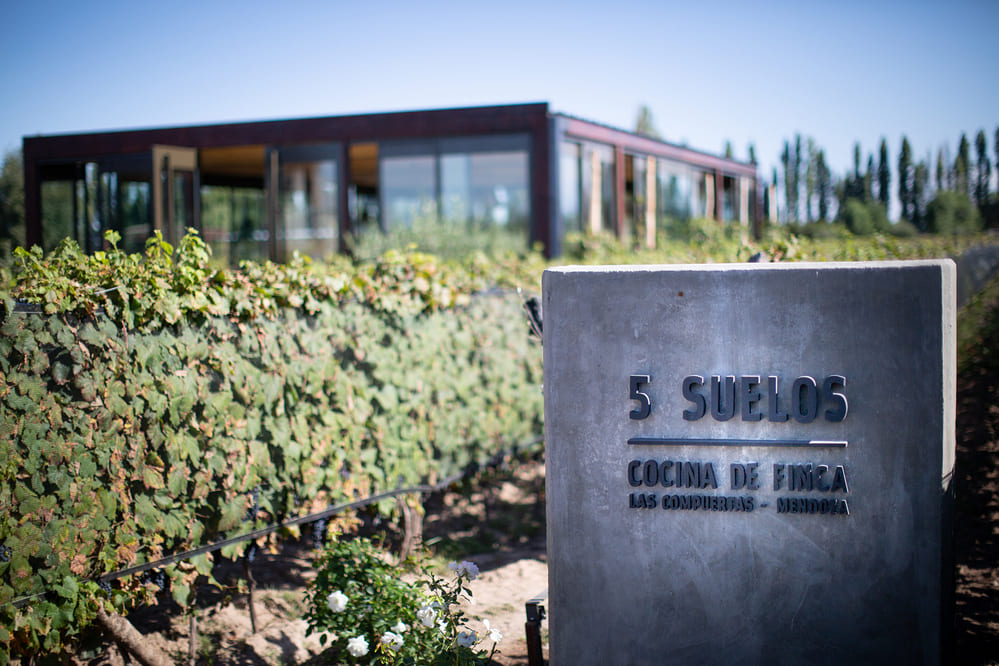
Eating at the pyramid: Angélica Cocina Maestra
Visitors heading along Calle Cobos will come across one of the most identifiable images in the entire province: the famous Mayan pyramid that announces your arrival at Catena Zapata, a bodega that is a trailblazer in spreading the renown of Argentinian Malbec around the world. Here, you’ll find Angélica Cocina Maestra, a restaurant in which the decor of stone, brick vaulting and large Renaissance-style arches provides an imposing yet intimate backdrop. The menu is ably supported by wines produced here by a team comprising Nicolás Catena (the founder of the bodega) and his daughter Laura (the current managing director), alongside oenologist Alejandro Vigil. Various tasting options are available: Angélica Zapata wines provide an insight into the different varietals offered under this label (including Chardonnay, Malbec, Cabernet Franc, Cabernet Sauvignon and Merlot); La Famiglia Unita encompasses wines created by Nicolás’ children (from bodegas such as Luca, Aleanna and AlmaNegra); while those choosing the Escalera al Cielo wine-pairing option can taste one of the company’s icons, Estiba Reservada, with vintages ranging from 2006 to 2013, which highlights how Argentinian wine can develop over time. In terms of the dishes served here, these are contemporary in style and make full use of locally sourced ingredients: high-altitude trout with ricotta, sweetbreads with cauliflower, flat-iron steak oozing with delicious flavours, and salmorejo with asparagus, among others.
An oasis in the desert: Piedra Infinita
If you head a little over 100km south of the capital of Mendoza province, you’ll come to the Uco Valley, a wine region that has grown more than anywhere else in Argentina in the past 20 years. Located at the foot of the mountains, at altitudes ranging from 900-1,700m above sea level, this valley has a variety of geographical characteristics that everyone is talking about these days. It is a region of cooler climatic conditions, with a huge diversity of stony soils, including an abundance of limestone.Located further south, in Altamira, in the middle of a desert of arid soil, is Piedra Infinita, the bodega of the Zuccardi family, which opened in 2016 and is a homage to the mountains. Built using huge rocks from the surrounding area, its restaurant Piedra Infinita Cocina provides an overview of the wines that this family produces in different parts of the Uco Valley, in combination with a 9-course menu (including dishes such as peach soup, fresh fruit, Maipú mascarpone goat’s cheese and Picual olive oil; and pickled Malargüe chivito with Tupungato pistachios, zucchini carpaccio, lemon powder and mint emulsion). Five wine-pairing options are available, including traditional grape varieties found in Argentina and wines such as the Polígonos Semillon and Emma Bonarda, as well as the company’s flagship labels such as the Aluvional Paraje Altamira 2012 and Finca Piedra Infinita Los Membrillos 2020.

A route with limitless options
This is just a snapshot of all that Mendoza has to offer, among the dozens of places where visitors can appreciate the indelible culinary and cultural connection that exists between the flavours of the region’s kitchens and wine cellars. It is well worth visiting the garden of Riccitelli Bistró (the recipient of a MICHELIN Green Star), from where Juan Ventureyra sources the vegetables that bring life to his recipes, while savouring a Viñas Extremas Sauvignon Blanc, a white wine teeming with mineral aromas and produced from vines growing at an altitude of 1,700m above sea level. Or to listen to oenologist Agustina Hanna (Ruca Malen bodega and restaurant) explain the wines she has chosen to pair with the 7-course menu conjured up by chef Mariano Gallego. In this restaurant, wine is so prominent that the menu first mentions the label selected, followed by the dish that accompanies it: for example, with the Capítulo Corte de Blancas, the chef prepares rabbit with mustard and summer vegetables; and with the Capítulo Tres Malbec de Ánforas, he brings out a selection of Argentinian cheeses.
Visitors should also head to Casa Vigil (one MICHELIN Star and one Green Star) in Chachingo to savour cuisine teeming with local flavours, paired with a Gran Enemigo Gualtallary, the first Argentinian wine to be awarded 100 points by Robert Parker for its 2013 vintage. And to Pedriel, one of the most historic areas for great Mendoza wines, for lunch at Renacer (bodega and restaurant), which offers different menus which are always accompanied by the estate’s wines. In the regional capital itself, it is also a great idea to book at table at Azafrán (one MICHELIN Star), where chef Sebastián Weigandt combines his cuisine with a wine cellar home to over 300 different labels that represent a map of the entire province.

This is a land where wine is born, and one where the land provides the raw material that provides life for all of its best dishes. Mendoza honours this terroir through bodegas and restaurants that offer some of the best flavours to be found anywhere in Argentina.
Hero image: mountains and vineyards surrounding the Ruca Malen restaurant © Sebastian Sena/Ruca Malen
This article has been written with the support of our Destination Partner in the “MICHELIN Guide Buenos Aires & Mendoza 2024”.




